This article was co-authored by David Nazarian, MD. Dr. David Nazarian is a board certified Internal Medicine Physician and the Owner of My Concierge MD, a medical practice in Beverly Hills California, specializing in concierge medicine, executive health and integrative medicine. Dr. Nazarian specializes in comprehensive physical examinations, IV Vitamin therapies, hormone replacement therapy, weight loss, platelet rich plasma therapies. He has over 16 years of medical training and facilitation and is a Diplomate of the American Board of Internal Medicine. He completed his B.S. in Psychology and Biology from the University of California, Los Angeles, his M.D. from the Sackler School of Medicine, and a residency at Huntington Memorial Hospital, an affiliate of the University of Southern California.
wikiHow marks an article as reader-approved once it receives enough positive feedback. In this case, 100% of readers who voted found the article helpful, earning it our reader-approved status.
This article has been viewed 661,426 times.
Nurses and phlebotomists draw blood to perform a variety of medical tests. This article will teach you how professionals draw blood from patients.
Steps
Set up for Blood Draw
-
1Observe any patient precautions. Take note of signs behind the patient's bed or on the patient's chart. Observe isolation restrictions, and make sure that, if the blood test requires fasting, that the patient fasted for the appropriate amount of time.
-
2Introduce yourself to your patient. Explain what you are about to do as you draw blood.Advertisement
-
3Wash and sanitize your hands. Put on sanitary gloves.
-
4Review the patient's order.
- Verify the requisition is stamped with the patient's first name, medical record number and birthday. No birth year required.
- Make sure that the requisition and labels match exactly with the patient's identification.
- Confirm the patient's identity from the wristband or by asking the patient for a name and date of birth. Only month and day of birth is required.
-
5Assemble your supplies. You should have in front of you: blood collection tubes, a tourniquet, cotton balls, bandage or medical adhesive tape, and alcoholic wipes. Make sure that your blood tubes and blood culture bottles have not expired.
-
6Select the appropriate needle. The type of needle that you choose will depend on the patient's age, physical characteristics and the amount of blood that you plan to draw.
Find a Vein
-
1Seat the patient in a chair. The chair should have an armrest to support the patient's arm but should not have wheels. Make sure that the patient's arm is not bent at the elbow. If the patient is lying down, place a pillow under the patient's arm for additional support.
-
2Decide which arm you will be drawing from or let your patient decide. Tie a tourniquet around the patient's arm about 3" to 4" (7.5cm to 10 cm) above the venipuncture site.
-
3Ask the patient to make a fist. Avoid asking the patient to pump his or her fist.
-
4Trace the patient's veins with your index finger. Tap the vein with your index finger to encourage dilation.
-
5Disinfect the area that you plan to puncture with an alcohol wipe. Use a circular motion, and avoid dragging the wipe over the same piece of skin twice.
-
6Allow the disinfected area to dry for 30 seconds so that the patient doesn't feel a sting when the needle is inserted.
Perform the Blood Draw
-
1Inspect your needle for defects. The end should have no obstructions or hooks that will restrict the flow of blood.
-
2Thread the needle into the holder. Use the needle sheath to secure the needle in the holder.
-
3Tap any tubes that contain additives to dislodge the additives from the walls of the tube.
-
4Insert the blood collection tube onto the holder. Avoid pushing the tube past the recessed line on the needle holder or you may release the vacuum.
-
5Grasp your patient's arm. Your thumb should pull the skin taut about 1" to 2" (2.5cm to 5cm) below the puncture site. Make sure the patient's arm points slightly down to avoid reflux.
-
6Line up the needle with the vein. Make sure the bevel is up.
-
7Insert the needle into the vein. Push the collection tube toward the holder until the butt end of the needle pierces the stopper on the tube. Make sure that the tube is below the puncture site.
-
8Allow the tube to fill. Remove and discard the tourniquet as soon as blood flow into the tube is adequate.
-
9Remove the tube from the holder when the blood flow ceases. Mix the contents if the tube contains additives by inverting the tube 5 to 8 times. Do not vigorously shake the tube.
-
10Fill the remaining tubes until you've completed the requisition.
-
11Ask the patient to open his or her hand. Place a piece of gauze over the puncture site.
-
12Remove the needle. Place the gauze on top of the venipuncture site and apply gentle pressure to stop the bleeding.
Stop the Blood Flow and Clean the Site
-
1Activate the needle's safety feature and discard the needle in a sharps container.
-
2Tape the gauze to the puncture site after the bleeding has stopped. Instruct the patient to keep the gauze on for at least 15 minutes.
-
3Label the tubes in view of the patient. Chill the specimens if needed.
-
4Discard all waste and put your materials away. Wipe the armrest of the chair with germicidal wipes.
Expert Q&A
-
QuestionWhat does tapping a vein do?
 David Nazarian, MDDr. David Nazarian is a board certified Internal Medicine Physician and the Owner of My Concierge MD, a medical practice in Beverly Hills California, specializing in concierge medicine, executive health and integrative medicine. Dr. Nazarian specializes in comprehensive physical examinations, IV Vitamin therapies, hormone replacement therapy, weight loss, platelet rich plasma therapies. He has over 16 years of medical training and facilitation and is a Diplomate of the American Board of Internal Medicine. He completed his B.S. in Psychology and Biology from the University of California, Los Angeles, his M.D. from the Sackler School of Medicine, and a residency at Huntington Memorial Hospital, an affiliate of the University of Southern California.
David Nazarian, MDDr. David Nazarian is a board certified Internal Medicine Physician and the Owner of My Concierge MD, a medical practice in Beverly Hills California, specializing in concierge medicine, executive health and integrative medicine. Dr. Nazarian specializes in comprehensive physical examinations, IV Vitamin therapies, hormone replacement therapy, weight loss, platelet rich plasma therapies. He has over 16 years of medical training and facilitation and is a Diplomate of the American Board of Internal Medicine. He completed his B.S. in Psychology and Biology from the University of California, Los Angeles, his M.D. from the Sackler School of Medicine, and a residency at Huntington Memorial Hospital, an affiliate of the University of Southern California.
Board Certified Internal Medicine Physician When you tap the vein, you're actually trying to locate it, as the veins are a bit bouncy. By tapping it, you can localize exactly where it is before you use a needle or catheter.
When you tap the vein, you're actually trying to locate it, as the veins are a bit bouncy. By tapping it, you can localize exactly where it is before you use a needle or catheter.
Warnings
- Never attempt a blood draw more than twice. If you can't complete the procedure, consult a nurse.⧼thumbs_response⧽
- Follow precautionary procedures if any of your materials become soiled with blood or if you or your patient is pierced with a contaminated needle.⧼thumbs_response⧽
- Consult a doctor or nurse if you can't stop the puncture site from bleeding.⧼thumbs_response⧽
- Avoid leaving a tourniquet on a patient's arm for more than 1 minute.⧼thumbs_response⧽
Things You'll Need
- Chair with armrests or bed with a pillow to support the patient's arm
- Soap and water or hand sanitizer
- Sanitary gloves
- Requisition and labels
- Blood collecting trays
- Sterile needles
- Holders for needles and evacuated tubes
- Tourniquet
- Alcohol wipe
- Clean gauze
- Germicidal wipes
- Disposal box
- Adhesive tape
- Biohazard bags
Expert Interview
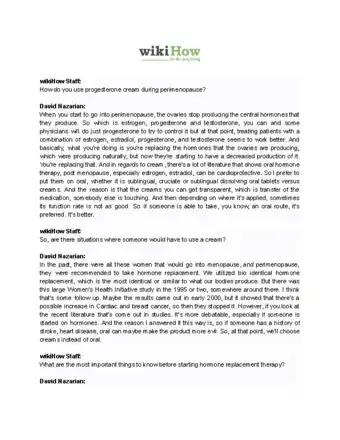
Thanks for reading our article! If you'd like to learn more about becoming a nurse, check out our in-depth interview with David Nazarian, MD.
References
About This Article
To draw blood, the doctor will start by tying a tourniquet around the patient's arm and asking them to make a fist. Then, the doctor will find the patients vein and disinfect the area with an alcohol wipe. Once the area is disinfected, the doctor will pull the patient's skin taut and line the needle up with their vein. Next, expect the doctor to insert the needle into the patient's vein and allow the attached tube to fill with blood. When the first tube is full, the doctor will remove it from the needle holder and repeat with the remaining tubes. For tips on setting up a needle and blood collection tubes, keep reading!
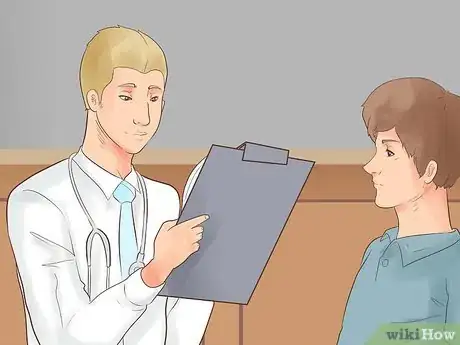

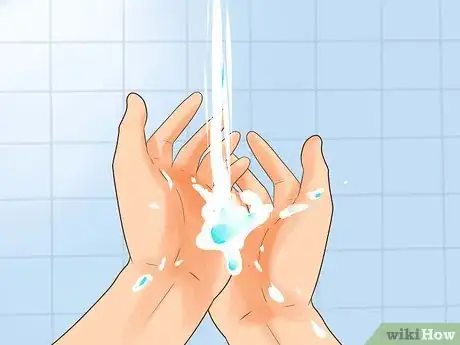
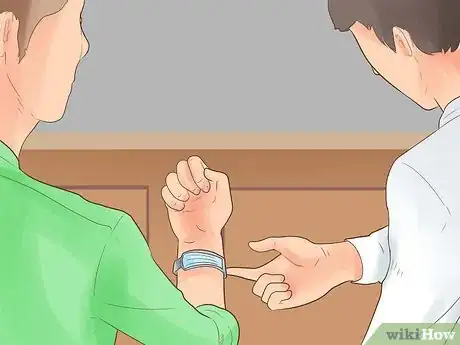




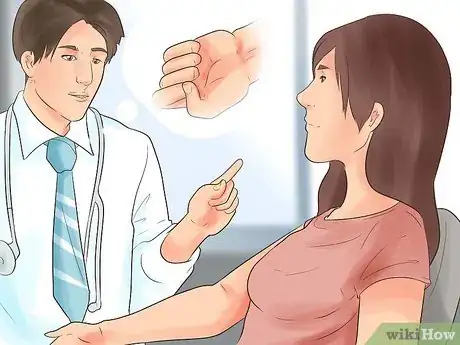
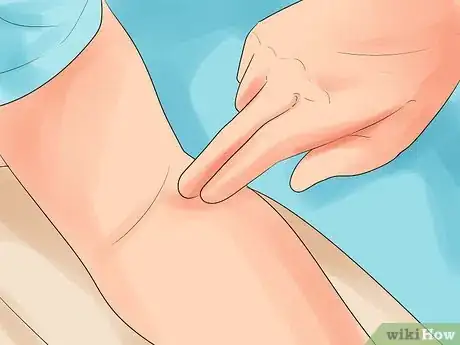

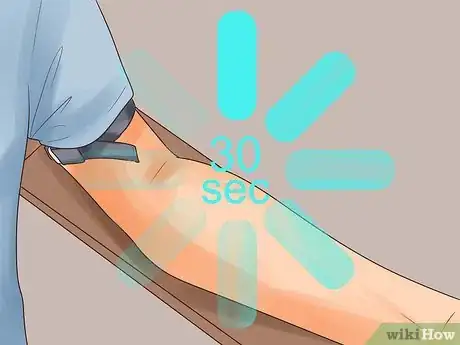
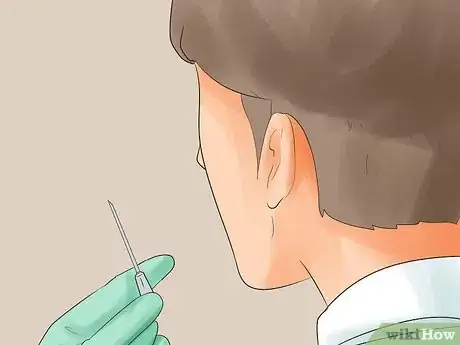
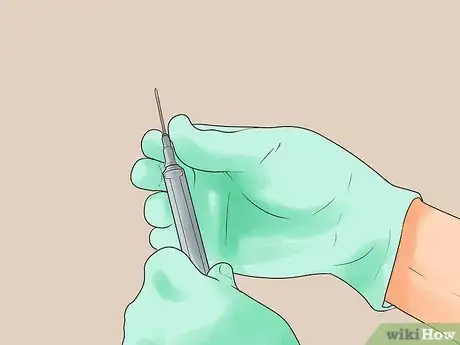
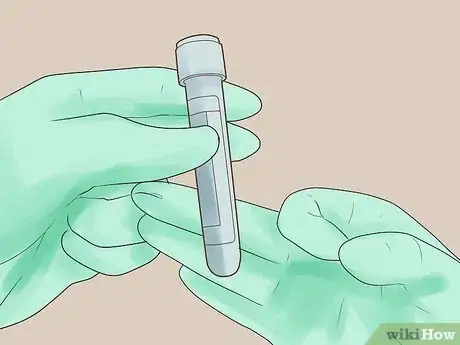
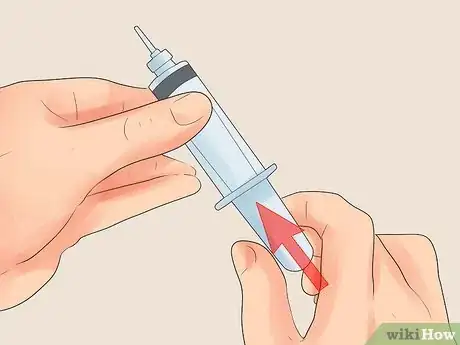
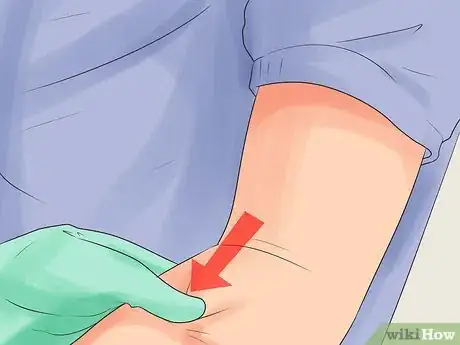

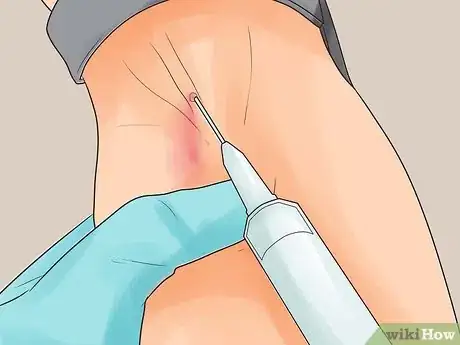
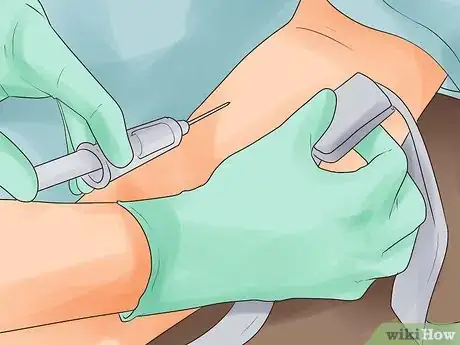

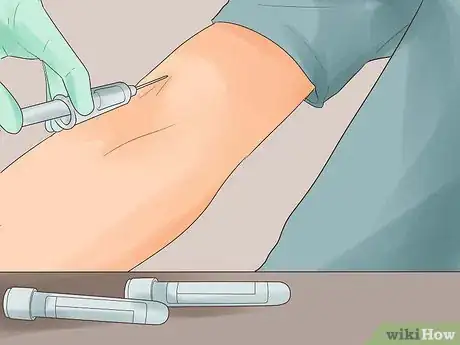
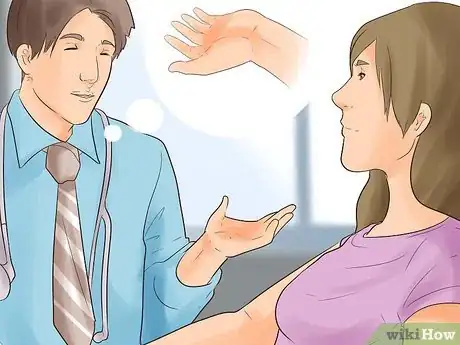

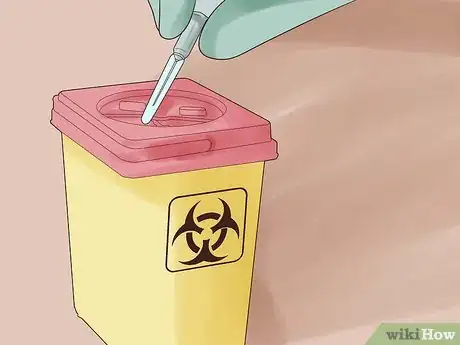
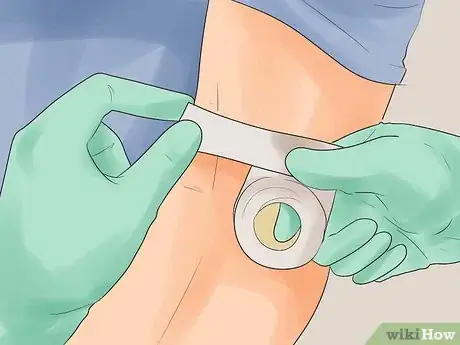
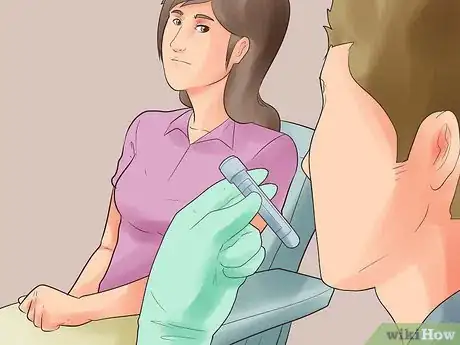
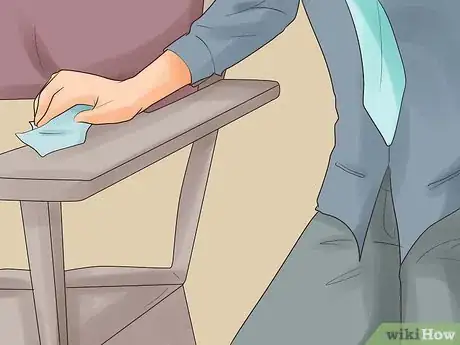






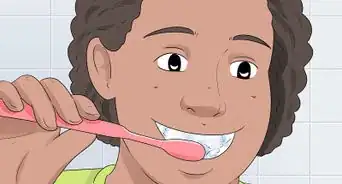
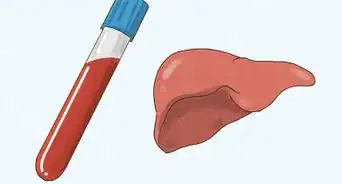

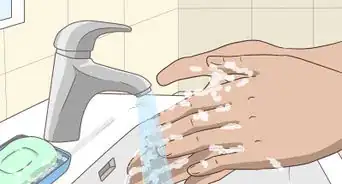
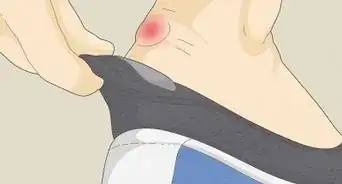
-Step-14-Version-2.webp)
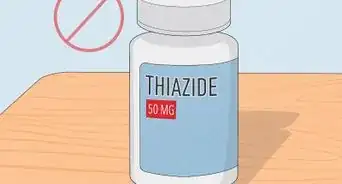
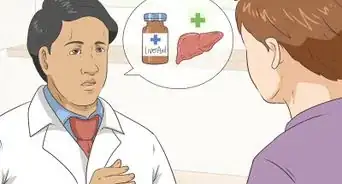












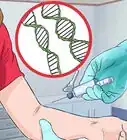




































Medical Disclaimer
The content of this article is not intended to be a substitute for professional medical advice, examination, diagnosis, or treatment. You should always contact your doctor or other qualified healthcare professional before starting, changing, or stopping any kind of health treatment.
Read More...